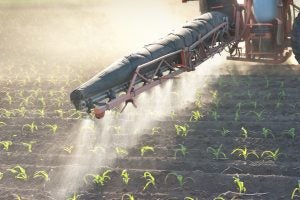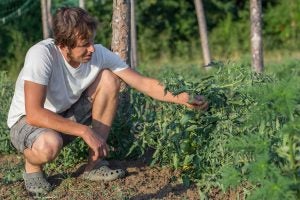Blaming agriculture for a big hunk of greenhouse gasses (GHG) is gaining steam by celebrities and in the mainstream media. Recently, I quoted John Kerry’s accusations. And CNBC, while reporting on Bill Gates podcast Unconfuse Me, quotes Gates, “Of all the climate areas, the one that people are probably least aware of is, all the fertilizer and cows, and that’s a challenge.”
That report goes on to say that, globally, the U.S. Environmental Protection Agency blames agriculture, forestry, and other land uses for 22 percent of GHGs, with most of that coming from the cultivation of crops and livestock. Ignored here is the fact that most of the carbon released by crops and livestock came from the atmosphere, and is just being recycled. The Congressional Research Service in 2022 assigned 11 percent of U.S. GHGs to agriculture and forestry, and credited these industries — which sink vast amounts of atmospheric carbon into plant and animal tissue — with offsetting 13 percent of total U.S. GHGs, a net positive of 2 percent for these industries.
Globally, agriculture and forestry may be net emitters of GHGs, but not in the U.S. nor in other countries such as Australia and most of Europe, where modern agricultural methods are used. Big crops absorb big amounts of CO2. No-till and minimum tillage use fewer fossil fuels per acre.
Sure, it takes a lot of fertilizer to grow 200 bushel corn — about one pound per bushel. And about two pounds of CO2 are emitted to produce one pound of nitrogen fertilizer. But a 200 bushel corn crop will capture 25,000 pounds of CO2 and incorporate the carbon into plant tissue (and feed some bacteria and fungi around the roots) at a cost of 400 pounds of CO2 released in the fertilizer manufactured. Not a bad return in my book.

And every year more nitrogen is being produced by electrolysis, which results in no carbon emissions so long as green electricity is used (hydro, wind, solar). Hydrogen, of which three molecules are required to combine with one nitrogen to form ammonia (NH3), comes from water in the electrolysis process instead of fossil fuel from which most ammonia is made today.
Agricultural pundits who have no direct farming or ranching experience keep harping that farms must be reduced in size. Farmers must stop corn or soybean rotations, which they erroneously call “mono-cropping,” and rotate with crops that have only niche markets. Bring back cattle and pastures to let the animals furnish the fertilizer for grain crops. No matter that most of the nitrogen plopped on the ground by animals evaporates. No matter that cattle raised on grass alone take twice as long as feedlot animals to meet market weight, all the while belching more methane into the atmosphere. Grow more vegetables, they say, not realizing that it only takes 5 percent of cropland to grow the nation’s veggies. And most of that is taken up by potatoes.

Small, organic farms close to cities that grow dozens of crops using lots of labor may be able to make a good living (and more power to them), but they, I’m sorry, won’t feed a nation or the world. And studies have shown that food grown close to cities and dispersed in small amounts to customers is no more efficient, fuel-wise, than big trucks hauling produce across the country to distribute to grocery stores.
Granted, local food is generally fresher, but not always better tasting. And, also granted, buying local and knowing your farmer makes one feel good.
I’ve read a lot of books this past year that keep saying our food system is broken, and we must downsize, diversify, raise animals in small herds, become 100 percent organic, and grow everything, even grains, locally. I don’t understand why efficiency is lauded by pundits in every industry except agriculture.
I often think of the words of President Dwight D. Eisenhower, “Farming looks mighty easy when your plow is a pencil and you’re a thousand miles from the corn field.”
Jack DeWitt is a farmer-agronomist with farming experience that spans the decades since the end of horse farming to the age of GPS and precision farming. He recounts all and predicts how we can have a future world with abundant food in his book “World Food Unlimited.” A version of this article was republished from Agri-Times Northwest with permission.



